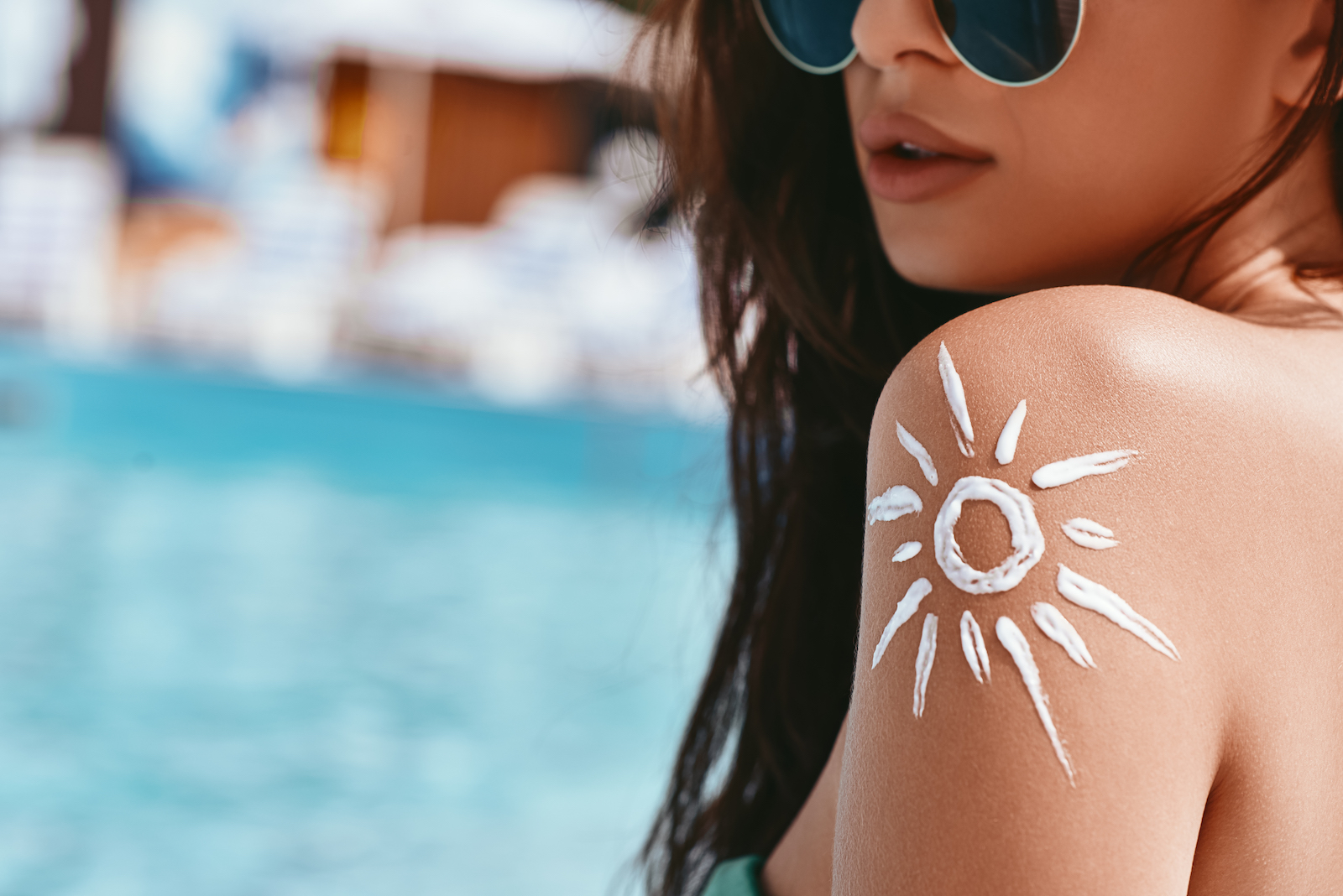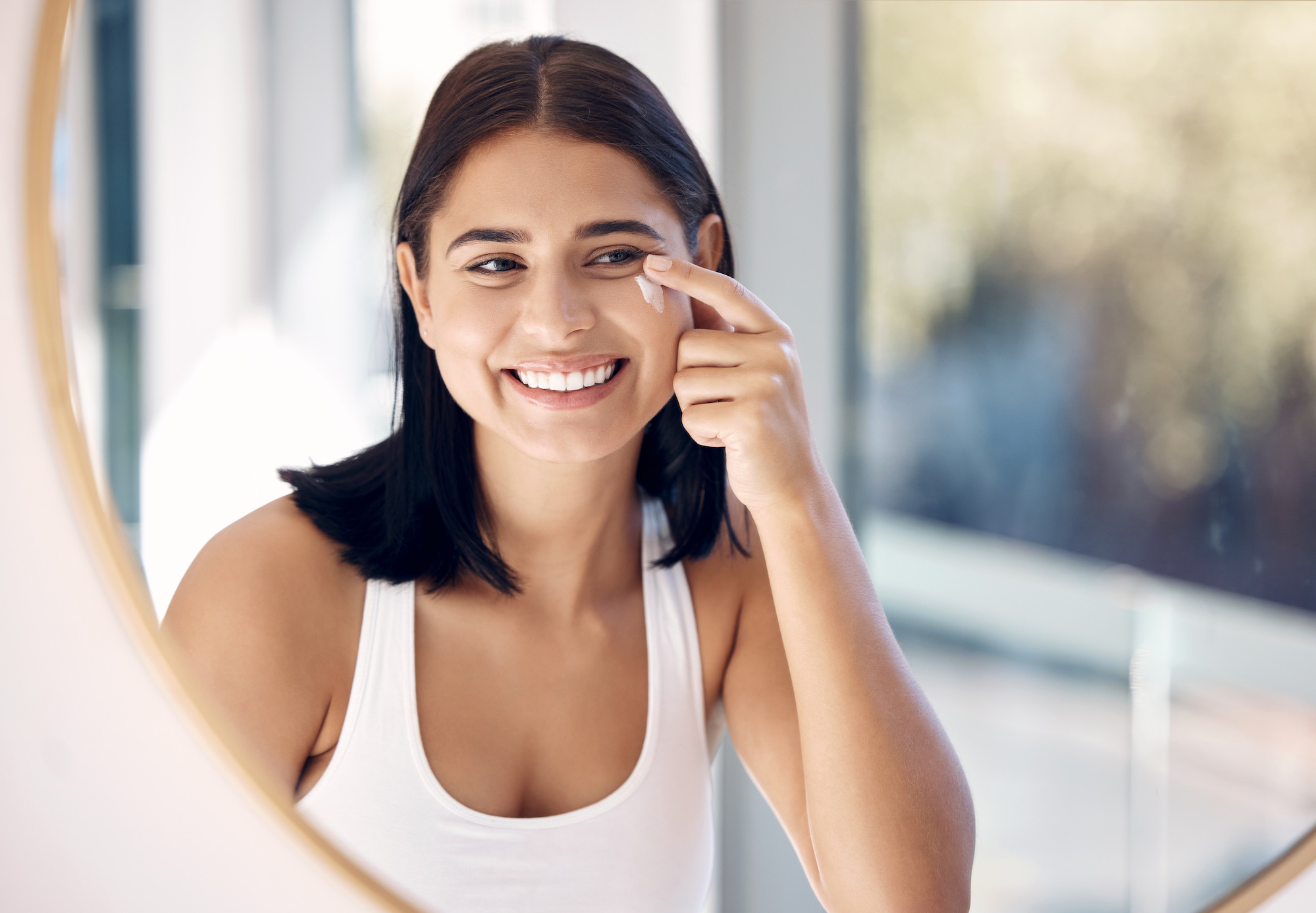As we swing into summer, we’d all love to be outside for our favorite outdoor activities. While so many of us are ready to get out and enjoy the summer sun, the dangers of sun damage are greater than ever. This is especially true in the intense Oklahoma sun. Since 2013, annual nationwide melanoma diagnoses have increased by 27 percent.
It’s more important than ever to apply and reapply sunscreen each and every day. The skin and wellness experts at Renew are here to teach you the basics and help you invest in your skin. We’re here to help you find the best facial sunscreen in Oklahoma City to protect your skin and fight the signs of aging caused by sun damage.
Choosing the Best Facial Sunscreen in Oklahoma City
The choices for sunscreen can seem limitless. How important is the SPF number? How much should you apply each time?
We’re here to help. After reading this post, you should have the information you need to make the best choice for your skin.
Mineral vs. Chemical Sunscreens
We don’t mean to suggest that one is better than the other. Mineral and chemical sunscreens are just two different strategies for combating the sun’s rays. At Renew, we offer some of the best facial sunscreen in Oklahoma City. At the end of each section, check out our recommendations.
Chemical Sunscreen
Chemical sunscreens contain active ingredients such as oxybenzone, avobenzone, or octinoxate. These organic compounds absorb ultraviolet (UV) radiation as it arrives at your skin and converts it to heat. This heat is released from your skin as a part of the normal process your body uses to control body temperature.
Chemical sunscreens are usually lightweight and blend well with all skin types. However, the active ingredients tend to cause more irritation for those with sensitive skin or acne-prone skin.
A note on chemical sunscreens that contain oxybenzone: The state of Hawaii recently banned sunscreens that contain oxybenzone because of its harmful effects on coral reefs. This might be a reason to skip sunscreens that contain oxybenzone, especially at the beach.
Our Favorite Chemical Sunscreen
Mineral Sunscreen
Mineral sunscreens, sometimes called physical sunscreens, contain active ingredients like zinc oxide or titanium dioxide. These ingredients sit on top of the skin and block the UV rays at the surface.
The mineral sunscreen formulations are thicker and slightly heavier than the chemical formulations. Mineral sunscreens sometimes leave a white residue, called a white cast, after application, which can result from larger-than-intended particle sizes of the active ingredients. Some users with darker skin tones might find this side effect unappealing.
Our Favorite Mineral Sunscreens
- ZO Sheer Fluid Broad Spectrum SPF 50
- ZO Sunscreen + Powder Broad Spectrum SPF 45
- EltaMD UV Clear (Also contains the chemical ingredient octinoxate)
- Sunbetter Tone Smart SPF 75 Sunscreen Lotion
- Sunbetter Tone Smart SPF 68 Sunscreen Compact
How and When to Apply, When to Reapply
The two most effective ways of protecting your skin from these harmful rays are to apply sunscreen in the first place and to make sure you reapply! One of the most common mistakes people make with sunscreen is not reapplying. There are some very simple recommendations on application and reapplication.
- Apply sunscreen at least 15 minutes before you plan to be in the sun. This ensures that the ingredients are absorbed before heading out.
- We recommend that you reapply sunscreen every 2 hours.
- If you plan to be swimming or sweating, reduce the amount of time between reapplications to every 80 minutes.
- If you are indoors but near a window, you can reapply every 4-6 hours.
- We recommend applying a quarter-size (about 1 to 1.5 teaspoons) amount of sunscreen to the face and neck each time you apply.
Ashley Hale, Licensed Aesthetician at Renew Wellness & Aesthetics, discusses the importance of sunscreen and how often you should be reapplying to protect your skin from sun damage and aging.
Don’t I already have sunscreen in my makeup?
You might! Purchasing makeup with SPF is a great way to make sure that you are staying protected. However, most makeup formulations do not meet the SPF 30 qualification. We recommend that you always apply a quarter-size amount of a good facial sunscreen of at least 30 SPF before applying the rest of your makeup.
What does all this stuff on the label mean?
Understanding what everything on the label means or the difference between different sunscreens can be difficult. What even is SPF? How do you find a good water-resistant sunscreen?
SPF
The SPF value of sunscreen is often misunderstood, but we’re here with a definitive answer. It’s a measure of the amount of UV radiation it takes to cause a sunburn. That amount is compared with the amount of radiation required if you’re not wearing that sunscreen.
The test used to calculate SPF measures the protection against Ultraviolet B (UVB) radiation. This means that the SPF value on the label only indicates the level of protection from UVB radiation.
It is often misinterpreted as the amount of time you can wear it before you get a sunburn. Of course, the longer you stay in the sun, the more UV radiation that accumulates. Once you reach the limit, you begin to burn. This is why it’s so important to reapply!
The best facial sunscreen in Oklahoma City will always have an SPF of 30 at the minimum. That’s the recommendation we give to our patients at Renew. If you have fair skin, you might want to consider increasing the SPF of your sunscreen.
Broad Spectrum
Since SPF only indicates UVB protection, the SPF value alone won’t help you pick the best facial sunscreen in Oklahoma City. In an additional laboratory test called the Broad Spectrum Test or the critical wavelength test, the sunscreen can demonstrate protection against Ultraviolet A (UVA) radiation.
During this test, UV light of different wavelengths is emitted at a test plate filled with the sunscreen. The amount of UV light that is absorbed by the sunscreen is measured.
If enough UV light is absorbed at a wavelength considered protective against both UVA and UVB radiation (at least 370 nm), the sunscreen receives a passing grade. A passing grade allows the use of “Broad Spectrum” on the sunscreen label.
Broad-Spectrum mineral formulations containing the active ingredient zinc oxide are effective against both UVA and UVB radiation. Widely regarded to be the most protective, it is a great choice when looking for the best facial sunscreen in Oklahoma City.
Our Favorite Broad-Spectrum Sunscreens:
All of our favorite chemical and mineral formulations we listed also pass the Broad Spectrum Test! We’ll list them again for you:
- ZO Smart Tone Broad Spectrum SPF 50
- ZO Sheer Fluid Broad Spectrum SPF 50
- ZO Sunscreen + Powder Broad Spectrum SPF 45
- EltaMD UV Clear (Also contains the chemical ingredient octinoxate)
- Sunbetter Tone Smart SPF 75 Sunscreen Lotion
- Sunbetter Tone Smart SPF 68 Sunscreen Compact
Water Resistant
No sunscreen is waterproof. All sunscreens wash off while you sweat or are in water. A sunscreen can receive a “water resistant” rating from the FDA by performing the same SPF test while exposed to water.

If the sunscreen remains effective against UVB radiation for at least 40 minutes, it can earn a 40-minute rating. If the sunscreen is effective for another 40 minutes, it can earn an 80-minute water-resistant rating.
Sunscreen Storage
All sunscreen labels have a section that says, “Protect the product in this container from excessive heat and direct sun.” This is because excessive heat can break down the sunscreen inside the container. If you plan to be outside for long periods, wrap your sunscreen in a towel or keep it in the cooler if you have one with you.
Expiration Dates
Sunscreens are required to list an expiration date on the label unless the manufacturer can demonstrate that the product remains stable for at least 3 years. If your sunscreen does not have an expiration date, it’s a safe bet to consider it expired 3 years after your purchase date.
You should not use expired sunscreens because there is no evidence that they remain effective after the expiration date. Go ahead and throw away any expired products.
Seek Some Shade
Even the best facial sunscreen in Oklahoma City can only offer limited protection from the sun. A great additional step is to wear a hat that can keep your face and shoulders shaded from the sun.
The UV radiation from the sun is most intense between 10 a.m. and 2 p.m. If you plan to be outdoors during this window, try and find a shady spot where you can retreat. You should aim for complete cover. And always make sure you’re still reapplying your sunscreen!
Sun Damage: The Basics
We apply sunscreen to our skin to form a protective barrier from the harmful UV radiation created by the sun that damages our skin. Studies continue to show that sunscreen, through its protection from UV radiation, prevents photoaging, the development of wrinkles, the breakage of capillaries near the surface of your skin, and the creation of sunspots.
The Sun
Sitting nearly 100 million miles away, the sun produces so much energy and heat that we can feel its warmth on our skin. The cost of that warmth is UV radiation that we cannot see or feel.
The sun actually creates 3 types of UV radiation, but only Ultraviolet A (UVA) and Ultraviolet B (UVB) radiation make it through Earth’s natural sunscreen, the ozone layer. These two types lower our ability to fight off illness and are the causes of sunburns and sun damage, like hyperpigmentation, which causes premature aging.
UVA and UVB Radiation
Ultraviolet A radiation is the type that causes our skin to age prematurely. These rays penetrate deep into our skin and break down our skin’s natural collagen and cause hyperpigmentation or dark spots on the skin. Unfortunately, the ozone layer does very little to protect us from UVA radiation.
Ultraviolet B radiation causes premature skin aging but is also the primary cause of sunburns and skin cancers. The ozone layer protects us from some UVB radiation, but how much depends on factors like time of the year, altitude, and location. This is why there is extra emphasis on the importance of sunscreen when in the mountains or traveling near the Equator.
Visit Us Today To Find Yours
The best facial sunscreen in Oklahoma City for you can depend on a variety of factors, including your skin type and your daily activities. Whether you’re in Edmond, Norman, or Nichols Hills; spending a day on Lake Hefner; or strolling through Myriad Gardens, you need to lather up!
Visit us today so that we can help you choose the sunscreen that best fits your needs. Remember to always read the label and follow its directions for the best protection. Oh, and don’t forget to reapply!

